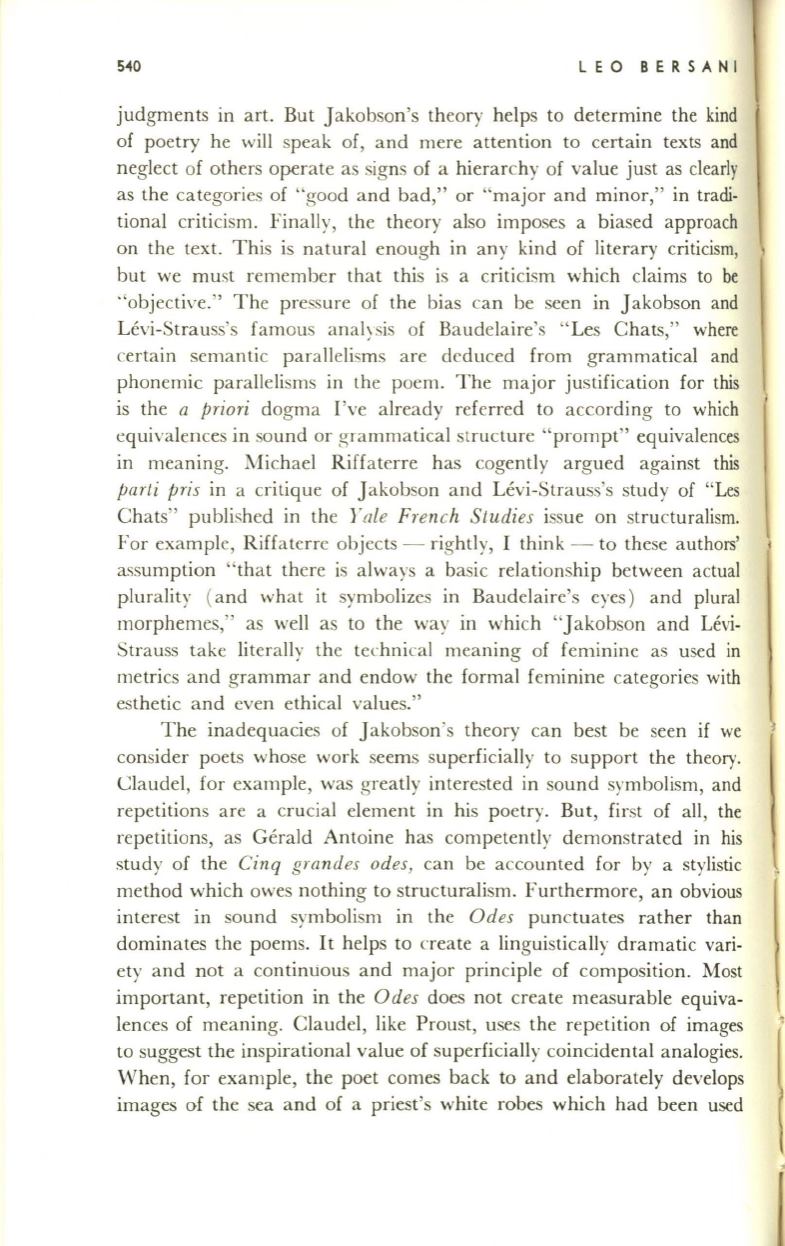
5<40
LEO BERSANI
judgments in art. But Jakobson's theory helps to determine the kind
of poetry he will speak of, and mere attention to certain texts and
neglect of others operate as signs of a hierarchy of value just as clearly
as the categories of "good and bad," or "major and minor," in tradi–
tional criticism. Finally, the theory also imposes a biased approach
on the text. This is natural enough in any kind of literary criticism,
but we must remember that this is a criticism which claims to be
"objective." The pressure of the bias can be seen in J akobson and
Levi-Strauss's famous analysis of Baudelaire's "Les Chats," where
certain semantic parallelisms are dcduced from grammatical and
phonemic parallelisms in the poem. The major justification for this
is the
a priori
dogma I've already referred to according to which
equivalences in sound or grammatical structure "prompt" equivalences
in meaning. Michael Riffaterre has cogently argued against this
parti pris
in a critique of Jakobson and Levi-Strauss's study of "Les
Chats" published in the }
'ale French Studies
issue on structuralism.
For example, Riffaterre objects - rightly, I think - to these authors'
assumption "that there is always a basic relationship between actual
plurality (and what it symbolizes in Baudelaire's eyes) and plural
morphemes," as well as to the way in which "Jakobson and Levi–
Strauss take literally the technical meaning of feminine as used in
metrics and grammar and endow the formal feminine categories with
esthetic and even ethical values."
The inadequacies of Jakobson's theory can best be seen if we
consider poets whose work seems superficially to support the theory.
Claudel, for example, was greatly interested in sound symbolism, and
repetitions are a crucial element in his poetry. But, first of all, the
repetitions, as Gerald Antoine has competently demonstrated in his
study of the
Cinq grandes odes,
can be accounted for by a stylistic
method which owes nothing to structuralism. Furthermore, an obvious
interest in sound symbolism in the
Odes
punctuates rather than
dominates the poems.
It
helps to create a linguistica lly dramatic vari–
ety and not a continlious and major principle of composition. Most
important, repetition in the
Odes
does not create measurable equiva–
lences of meaning. Claudel, like Proust, uses the repetition of images
to suggest the inspirational value of superficially coincidental analogies.
When, for example, the poet comes back to and elaborately develops
images of the sea and of a priest's white robes which had been used


